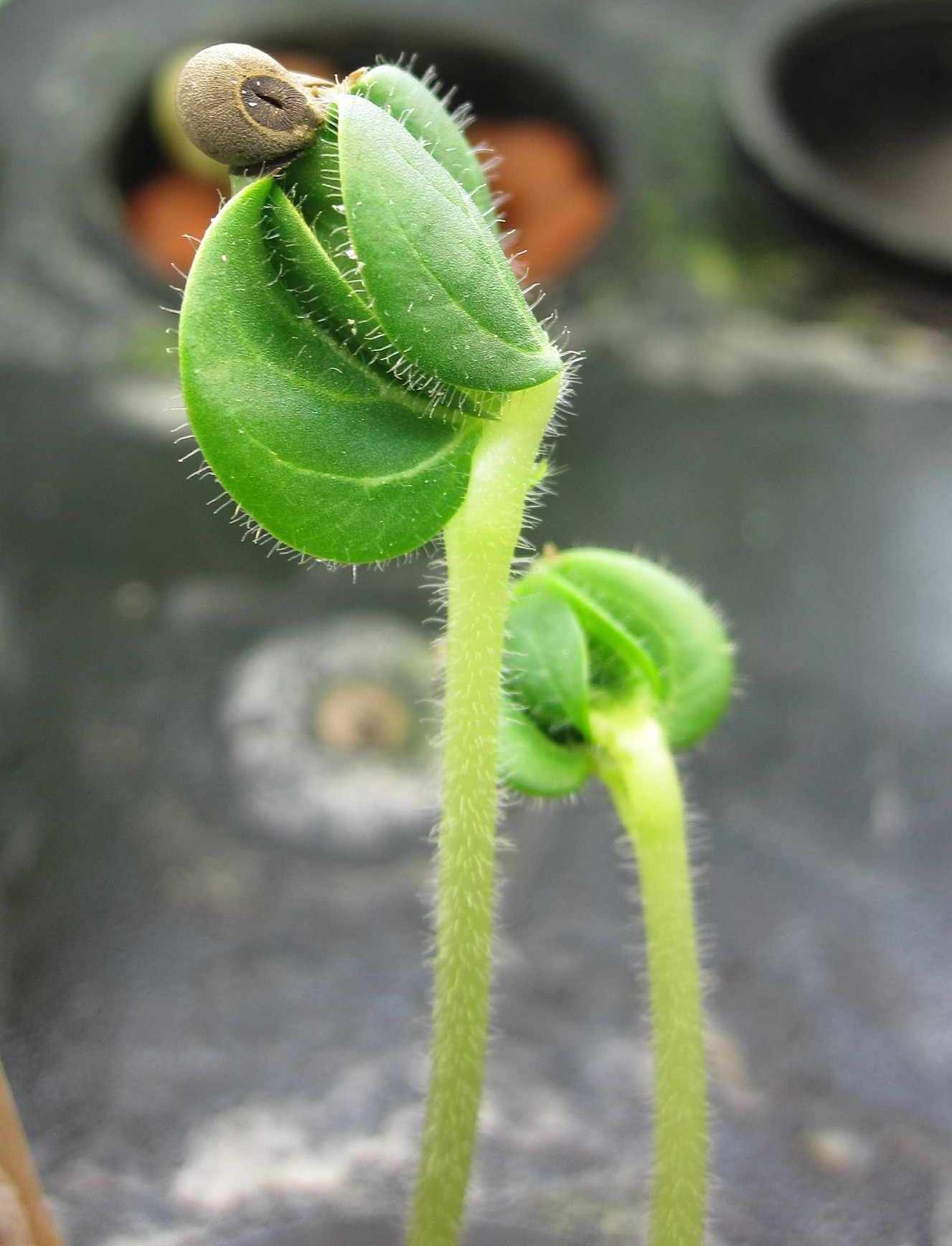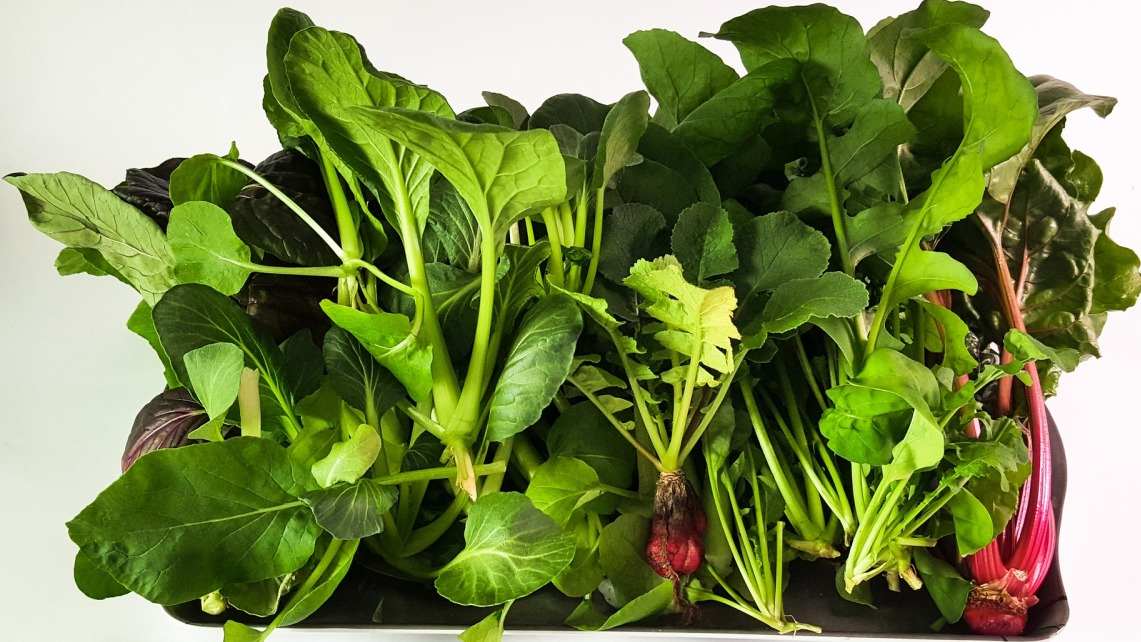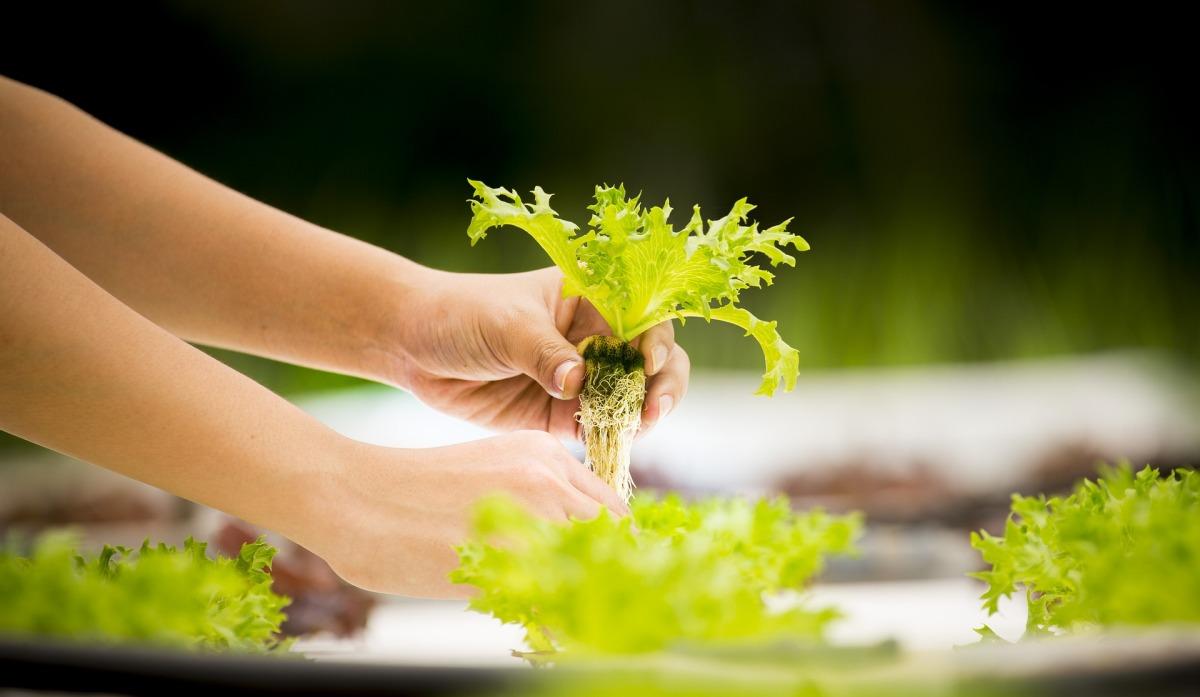Introduction: Hello gardeners, we are back with a great information of growing leafy greens in hydroponics. Leafy greens are the most popular locally grown vegetables. Some of the leafy greens are lettuce, arugula, kale, endive, mustard, and spinach. They can be formed locally year-round in a controlled environment greenhouses in hydroponics.
A step by step guide to growing leafy greens in hydroponics
A hydroponic system supplies nutrients to the roots in solution with the irrigation. The nutrient solution is still, or it is recirculated using a pump, and plant roots can be suspended in the solution within a soilless substrate. All hydroponic systems want to provide plant roots with enough nutrients, water, and oxygen for good growth. Some different types of hydroponic systems suitable for the production of leafy greens include still solution hydroponics, substrate hydroponics with a recirculating solution and nutrient film technique (NFT).
Hydroponic growing is great for conserving water versus traditional growing methods. Typically, the only water loss is what is taken up and transpired through the plant leaves, while in soil or soilless methods; a lot of water evaporates into the air from the exposed growing media. Basically, in hydroponics growing methods the water is being applied directly where it is needed right in the root zone.
Most popular lettuce and leafy green varieties that are proven to grow well using hydroponic systems.
You should not miss the How to Build a Fence for your Garden.

Lettuce
Lettuce is one of the popular hydroponic crops. Leaf lettuce is a good choice for hydroponic growing. It thrives in the simplest of setups and doesn’t want a lot of extra attention. You can harvest the outer leaves of lettuce as it grows, meaning that you’ll end up with an extended harvest of crisp, fresh lettuce. As you cut the outer leaves away, the inner leaves quickly produce to take their place. Romaine, Bibb lettuce and another leafy type of lettuce will thrive.
There are many reasons that growing lettuce hydroponically is such a popular endeavor for home growers;
- Lettuce can be grown as a year-round in controlled environments.
- Lettuce grows rapidly; it takes only about 3 weeks to get to that first edible leaf harvest and 45 to 85 days to harvest a full head.
- It doesn’t want full sun and grows well even in low light and temperatures.
- Since it’s a leafy vegetable that is not supposed to get to a flowering phase, nutrient solutions are easy and do not have to be changed over the growing season.
- It can be harvested one leaf at the time (which extends the harvesting season) or as a whole head, depending on your needs.
Leafy greens
Just like lettuce, other leafy green vegetables will grow well in a hydroponic system. Spinach not only thrives, but you get the added advantage of no more sandy grit down in your spinach. Other leafy green choices are kale, arugula, mustard greens, watercress, and Swiss chard. Harvest these all leafy greens at once or snip off a bit at a time, leaving the rest of the plant to keep growing. Don’t let them get too big for your setup since overly large greens could suffer from a lack of air circulation.

The plastic trough and cover for growing leafy greens
A trough made of plastic or some other opaque material that does not absorb heat and does not rust could be used as a container. The length and width of the trough do not matter, but the height should be 10 to 15 cm. For convenience, the size of the trough is 15 cm high, 52 cm long and 26 cm wide.
The trough cover is made from polystyrene, thick paper or plastic and its function are to protect the nutrient solution from the sunlight and the rain. It has 8 holes into which the small seedling baskets are placed. Each trough can accommodate 8 leafy vegetable seedlings. The distance between the holes mainly depends on the type of vegetables being grown.
You may be interested in Growing Hydroponic Corn.
Considerations for growing leafy greens hydroponically
Several factors impact how quickly plants grow in a hydroponic system. Temperatures that are too hot or too cold can have a big impact, and can even cause leafy plants to stop growing. Most leafy greens will grow well with daytime temperatures of about 75 to 80 degrees and nighttime temperatures around 65 degrees. But cold weather plants, that are lettuce, prefer temperatures about 10 degrees lower. Light is another important factor, and plants that don’t get enough light won’t grow fast if they grow at all. Hydroponic leafy green plants will grow outdoors or in greenhouses that allow for plenty of natural light. They can also grow inside, by using fluorescent grow lights to illuminate them for about 16 hours each day.
Choose your system for growing leafy greens in hydroponics
The most common hydroponic growing systems for leafy greens are deep water culture (DWC) and nutrient film technique (NFT). In DWC, also referred to as raft culture or pond culture, seedlings are transplanted into Styrofoam rafts which are floated on a 6 to 12-inch constructed pond containing a large volume of nutrients solution. A pump is used to circulate water through the pond and an air pump or injection with oxygen is mainly used to keep the pond aerated.

In nutrient film technique, seedlings are transplanted onto shallow channels where a thin film of nutrient solution is continuously circulated. The shallow channels are sloped at 1 to 4 percent away from a center aisle and drained at the ends back to the water reservoir. An advantage of the DWC system is because a large volume of water is used rapid changes are avoided in water temperature, pH level, electrical conductivity (EC) and nutrient solution composition.
Some of the Leafy greens grown in hydroponics
Arugula
Arugula can usually harvest as early as one month after planting. It is an easy-to-grow green using any hydroponic setup. The leaves of the Arugula plant add a tangy or peppery flavor to any meal. Plant this variety all-year-round using hydroponics system and grow lights.
Arugula has a peppery taste and is rich in vitamin A, vitamin C, folate, and calcium. Hydroponic arugula is delicate in texture, flavor, and appearance than a rocket and wild arugula; however, it has more succulent and nutrient-dense leaves. With lobed leaves that reach about 3 or 4 inches in length, arugula offers an herbaceous, peppery flavor with nuances of nuts and mustard. The Arugula plants yield more consistent harvests because of their controlled growing environments.
Incase if you miss this: Vertical Garden Design Ideas.
Chives
A perennial plant that produces narrow, grass-like leaves that have a mild onion-like flavor. Chives are rich in vitamin A and vitamin C, contain trace amounts of sulfur and are rich in calcium and iron. Used for several culinary creations. Plant this variety all-year-round using hydroponics and produce lights. The plant will grow to about 12 inches tall. Optimal temperatures for germination are between 60 to 70°F. Seeds can be started in cubes like rock wool, Oasis Cubes or even peat pellets. They are sometimes germinated in soil cells and transplanted to the hydroponic system setup as well.
Endive
Endive is a healthy and delicious leafy green plant. The Green Curled Endive plant will produce dark green curly leaves with large tender crisp ribs. Endive is excellent on salads and sandwiches. Endive rich in many vitamins and minerals, especially in folate and vitamins A and K, and is high in fiber. Endive is extremely easy to grow using any hydroponic setup you have. Plant this Endive variety all-year-round using hydroponics and grow lights.
Kale
Kale is extremely easy to grow using any hydroponic setup you have. Delicious and tender when stir-fried. You must be able to start harvesting young baby Kale 20 – 30 days after they were placed in the hydroponic system. Fully mature Kale can take 3 to 4 months. This of course changes depending on the variety and growing conditions.
Microgreens
Hydroponic growing is the cleanest and easiest approach to grow microgreens. With only a few exceptions, most microgreens grow well hydroponically. Growing microgreens hydroponically means you have complete control over how much of each type of nutrient your plants are getting. You can adjust fertilizer balances for each individual microgreen that you grow. Some microgreens such as wheatgrass, kale, and kohlrabi prefer to grow hydroponically and will produce better yields than if they were grown in soil. Sprinkle your seeds evenly across the entire grow mat. Each type of microgreen requires a different seed density, so refer to packaging or research to find the optimal density for your crop.
Spinach
When growing hydroponic spinach you can harvest delicious and super nutritious plants quickly from seed–consistently, over and over again. The hydroponically grown spinach featured in our article here took us about 5-1/2 weeks from sowing seeds to harvest. Spinach of any variety does great in hydroponics. It really loves a nice moist environment and will be ready to harvest from a seedling after around 14 to 20 days. Cooler temperature ranges at maturity promote sweeter tasting harvests. However, running to cool through the growth phase will mean the crop grows slower. Average day time temperatures of 72°F and average night time temperatures of 65°F gave us very favorable results, in both the quality of the harvest and cropping time.
Swiss chard
Swiss chard is a cool-season leafy green vegetable and easy to grow in a hydroponic system. It is not only one of the most popular vegetables along the Mediterranean but it is one of the most nutritious vegetables. Swiss chard is a popular hydroponics plant and is one of the fastest hydroponics plants. Swiss chard will survive in soils or nutrients with a pH of around 6.2 to 7.
You can harvest Swiss chard plants at around 35 days. Even after harvesting, it will continue to grow and prosper and give the heavy harvest. The plant is versatile and can tolerate most temperatures but thrives in cooler weather. Soil temperatures of 10 to 30°C are recommended, and it’s best to plant late in summer. It’s hardy and can handle some light freezes and frost.
You can also consider to read this: Unique Vegetable Garden Ideas.
Maintenance of hydroponic system for growing leafy greens
- Locate the hydroponic tank on a balcony or patio. It must be in full sunshine at least half of the day. Make sure rainwater does not get inside the trough and this is to prevent the solution from being diluted too much.
- Control pests and diseases manually, by removing any damaged plant leaves and by catching any insects. Spray insecticide only if necessary and avoid spraying with insecticides during the week before harvest.
- Allow an air space between the base of the stem and the water surface, to allow oxygen to reach the plant roots.
- When you have harvested your plant, wash the trough cover and the basket thoroughly before you plant a new crop. Use new media and solutions for the new plant.
Room conditions for growing leafy greens in hydroponics
It is very important that a hydroponic system is set up in the right conditions. Key elements contain relative humidity, temperature, CO2 levels, and air circulation. The ideal humidity for a hydroponic system grows room is from 40 to 60 percent relative humidity. Higher humidity levels, particularly in rooms with poor air circulation, can lead to powdery mildew and other fungal problems.

Ideal temperatures are between 68 and 70°F. High temperatures could cause plants to become stunted, and if the water temperature gets too high, it may lead to root rot.
Your grow room should have an supply of carbon dioxide (CO2). The best method to ensure this is by making sure the room has a constant flow of air. More advanced hydroponic gardeners can supplement CO2 levels in the room, since the more CO2 available, the faster your plants will grow.
Tips for growing leafy greens in hydroponics
Pay attention to all of the needs of your plants, not just things related to hydroponics. No matter how you grow them, cool weather crops still do best when it’s not hot, and warm weather plants love the heat. They need plenty of light; your vegetables are likely to need at least 8 hours per day of direct sunlight. Leafy greens produce well under an inexpensive fluorescent shop light placed just above their tops. If you try cucumbers, they will need sunlight or a full-spectrum grow light to be able to produce.
That’s all folks about Growing Leafy Greens in Hydroponics and List of plants suitbale for hydroponics. You may also check the Post Harvesting Technology of Vegetables.
Hi My name is Feroze I am 70 years old and about to retire. I am very keen to produce Leafy greens in my Hydroponic set up. I have built a 80 station system on a DIY basis from Amazon. My first attempt to produce Lettuce was not all that successful. I believe it could well be that I did not use RO water and that the nutrients I added were neither in the right proportion or to Little or too much!
The Lettuce were doing fine and growing …till overnight something went wrong with several plants dying. I also noticed some odd looking flies with large wings dead in many of the plastic pods.
I want to do a restart of the entire process and have completely cleaned the system….Definitely need some advice!!
I have an open terrace with a rooftop and I have since my failed attempt put a Green Mesh over the entire system ( Hoping to keep Insects at bay).
I would really be pleased to have you respond to me. Thanks and looking forward to either talking to you (9821094601)or receiving some written instructions…Regards,
Feroze